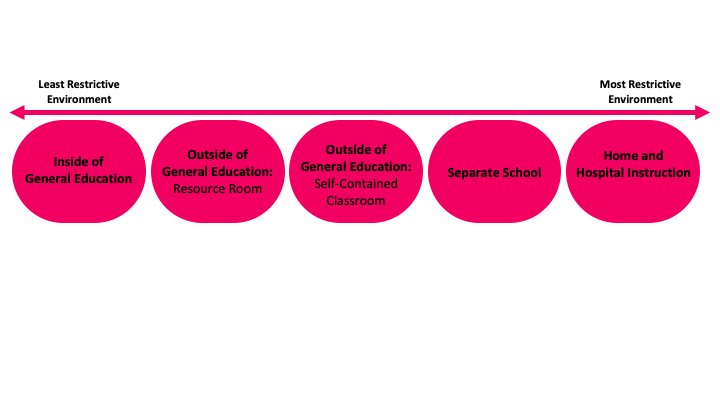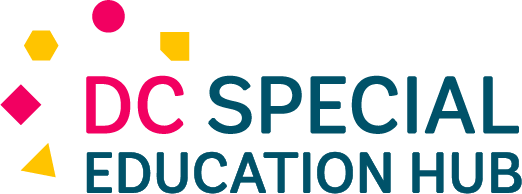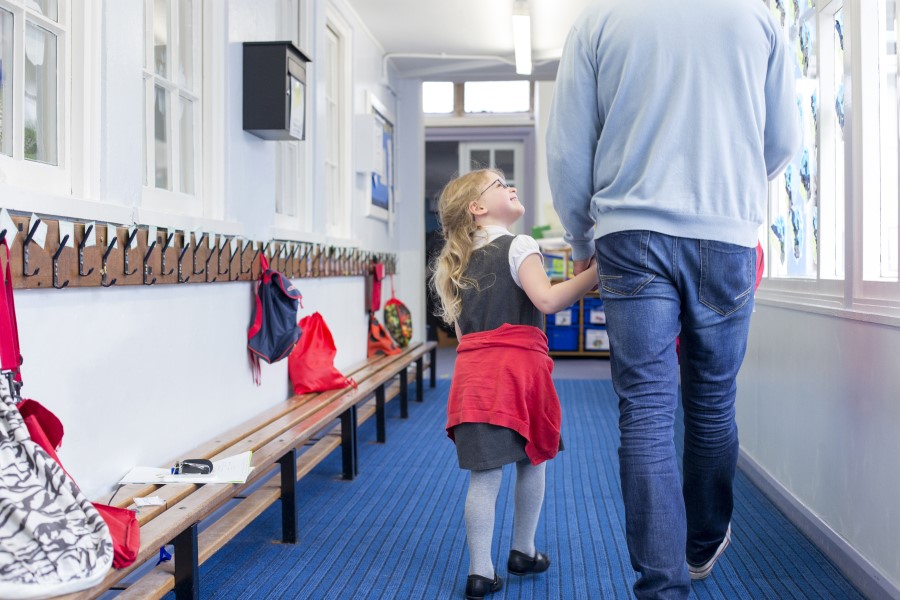 In DC, the special education eligibility process can take up to 90 days.
In DC, the special education eligibility process can take up to 90 days.
How Does It Start?
The special education eligibility process starts when a person familiar with the child makes a written or verbal request or referral for special education services. Referrals and requests are most often made by parents and teachers but can also come from other school or daycare staff members, physicians, psychologists, and more.
Based on the child’s age and enrollment status, referrals may go to one of several teams.
| If the student is... | Special education referrals are made through... |
|---|---|
|
Ages 3-5 and enrolled in a DC private or religious school, or is not yet enrolled in school |
Early Stages |
| Ages 3-22 and enrolled in a DCPS school or DC public charter school |
The child’s school |
|
Ages 5 and 10 months to 21 who are parentally placed in a DC private or religious school, live in DC and attend a private or religious school outside of DC, or are home schooled in DC |
Centralized IEP Support |
Once a referral is made, the team who received the referral has 30 days to obtain consent to evaluate the child from a parent or guardian. In DCPS and public charter schools, the school will call an AED or SEP meeting to analyze relevant existing data available on the child, including grades, test scores, behavior trends, and more. At that meeting, a multidisciplinary team will decide if the data suggests that further evaluation is required. If so, the team will decide which evaluations will be conducted and the parent or guardian will sign the Consent to Evaluate form.
What Does Evaluation Look Like?
Once the Consent to Evaluate form is signed, the team has 60 days to complete the agreed upon evaluations and make an eligibility determination.
Depending on the concerns present, evaluations may include:
- A psychological evaluation (to measure student strengths and gaps in areas like memory, cognition, and thought processes)
- An education evaluation (to measure student strengths and gaps in academic areas like mathematics, reading, and writing)
- Behavioral evaluations (these may identify markers of disabilities like ADHD, autism, or mental health challenges, as well as their impact on learning)
- Parent, student, and/or teacher interviews
- Evaluations for speech and language processing, fine motor abilities, or other areas that may need related services at school
- Other evaluations as deemed appropriate
Depending on the evaluation type, it may be conducted by a psychologist, specialist, school social worker, counselor, or other qualified professional.
How is Eligibility Determined?
Once the evaluations are complete, the multidisciplinary team will meet again to determine eligibility. At the meeting, each evaluator will share their findings. The team will then discuss whether the student meets the criteria for special education eligibility under one of the following categories:
- Specific Learning Disability (SLD)
- Autism (Formerly known as "Autism Spectrum Disorder" or ASD)
- Emotional Disability (ED - formerly called "Emotional Disturbance")
- Developmental Delay (DD)
- Speech or Language Impairment (SLI)
- Visual Impairment, Including Blindness (VI)
- Hearing Impairment (HI)
- Deaf-Blindness
- Orthopedic Impairment (OI)
- Intellectual Disability (ID)
- Traumatic Brain Injury (TBI)
- Other Health Impairment (OHI) - this category includes a number of disabilities, including ADHD
- Multiple Disabilities (MD) - this category is for students who meet the criteria or two or more other categories (for example, SLD and OHI)
If the student is found ineligible, the team may discuss other ways to support the student’s needs outside of special education (for example, tutoring, counseling, academic intervention, a Behavior Intervention Plan, or a 504 plan).
If the student is found eligible, the team has 30 days to develop and implement an Individualized Education Program (IEP).
Types of Meetings
Did You Know? The Multidisciplinary Team (MDT)
Special education decisions are made by a multidisciplinary team (MDT). That team includes the parent/guardian(s), general education teacher(s), special education teacher(s), a representative from the school/LEA, and the student (if appropriate). MDTs may also include specialists like speech language pathologists or occupational therapists, school counselors or social workers, school administrators, or other relevant professionals.
AED or SEP Meeting
The Analyze Existing Data (AED) meeting, sometimes called a Student Educational Progress (SEP) meeting, is the first meeting in the special education process. This meeting happens within thirty days after a student is initially referred for special education services.
Prior to this meeting, the multidisciplinary team compiles an Analyze Existing Data or AED form, which details all relevant data the team currently has on the student. This includes hearing and vision screenings, attendance data, teacher comments, test scores, observations, and other relevant information. At the AED meeting, the team will review and discuss this data in order to determine:
- If the student should be evaluated for special education services, and
- What evaluations should be conducted.
Eligibility Meeting
After the AED meeting is held and the agreed upon evaluations are completed, the multidisciplinary team will meet again for the eligibility meeting. At the meeting, each evaluator will share their findings. The team will then discuss whether the student meets the criteria for special education eligibility under one of the following categories:
- Specific Learning Disability (SLD)
- Autism (Formerly known as "Autism Spectrum Disorder" or ASD)
- Emotional Disability (ED - formerly called "Emotional Disturbance")
- Developmental Delay (DD)
- Speech or Language Impairment (SLI)
- Visual Impairment, Including Blindness (VI)
- Hearing Impairment (HI)
- Deaf-Blindness
- Orthopedic Impairment (OI)
- Intellectual Disability (ID)
- Traumatic Brain Injury (TBI)
- Other Health Impairment (OHI) - this category includes a number of disabilities, including ADHD
- Multiple Disabilities (MD) - this category is for students who meet the criteria or two or more other categories (for example, SLD and OHI)
If the student is found ineligible, the team may discuss other ways to support the student’s needs outside of special education (for example, tutoring, counseling, academic intervention, a Behavior Intervention Plan, or a 504 plan).
If the student is found eligible, the team has 30 days to develop and implement an Individualized Education Program (IEP).
Did You Know? Triennial Eligibility
Once a student is found eligible for special education services, they must revisit the eligibility process (AED meeting, evaluations, and eligibility meeting)every three years. This allows the team to update major evaluations and ensure the student still qualifies for services.
IEP Meeting
The primary special education meeting type is the Individualized Education Program (IEP) meeting. This occurs after a student is first found eligible for services and then again at least once every year. During this meeting, the team comes together to review and discuss the IEP, which includes the student’s disability category, present performance levels, baseline data and goals for the coming year, service settings and location(s), classroom and testing accommodations, and other services where applicable (like dedicated aides or transportation).
Once the team agrees to the drafted IEP, it will be finalized and implemented for the coming year.
Notes on IEPs
- IEPs are written to be used for a full calendar year, not just a school year. (For example, this means that an IEP written in December of a student’s seventh grade year will be in effect until December of the student’s eighth grade year.)
- While IEP meetings must happen at least once a year, they may be called more frequently if the team feels the IEP needs to be reviewed or updated.
- The student’s parent/guardian has the right to request an IEP meeting at any time.
Prepare for an IEP Meeting Printable
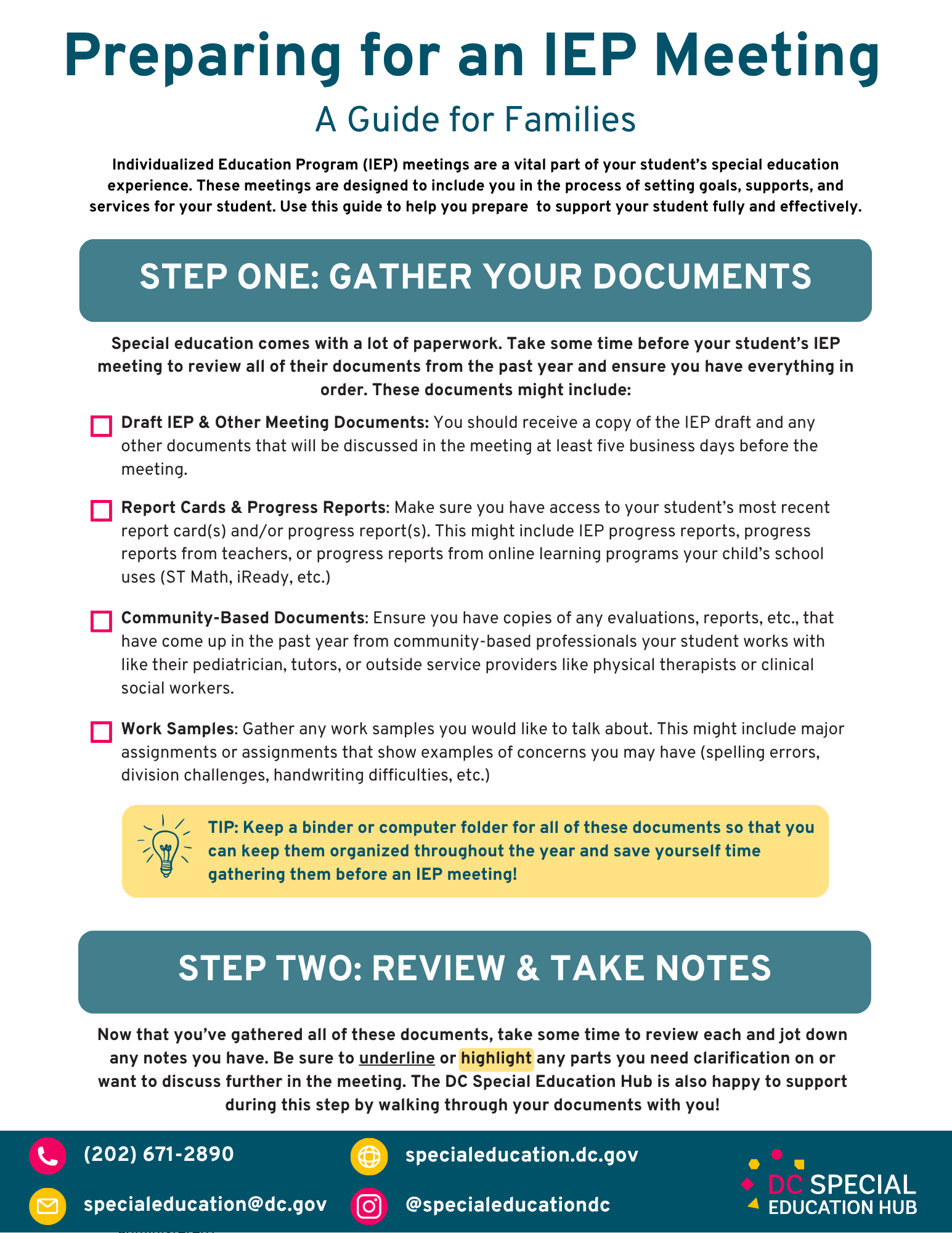 |
Need support in preparing for an upcoming IEP meeting? Check out our checklist that offers five simple steps to help families feel more confident and organized before an IEP meeting. Also Available in the Following Languages: |
Special Education in the District of Columbia: Your Questions Answered Booklet
 |
Our Special Education Family Guide answers the most common questions families have about special education in the District. The guide includes sections on eligibility and evaluation, special education plans and services, and how disability is considered in school discipline proceedings. Also Available in the Following Languages: |
A Family Guide to Nonpublic Placement
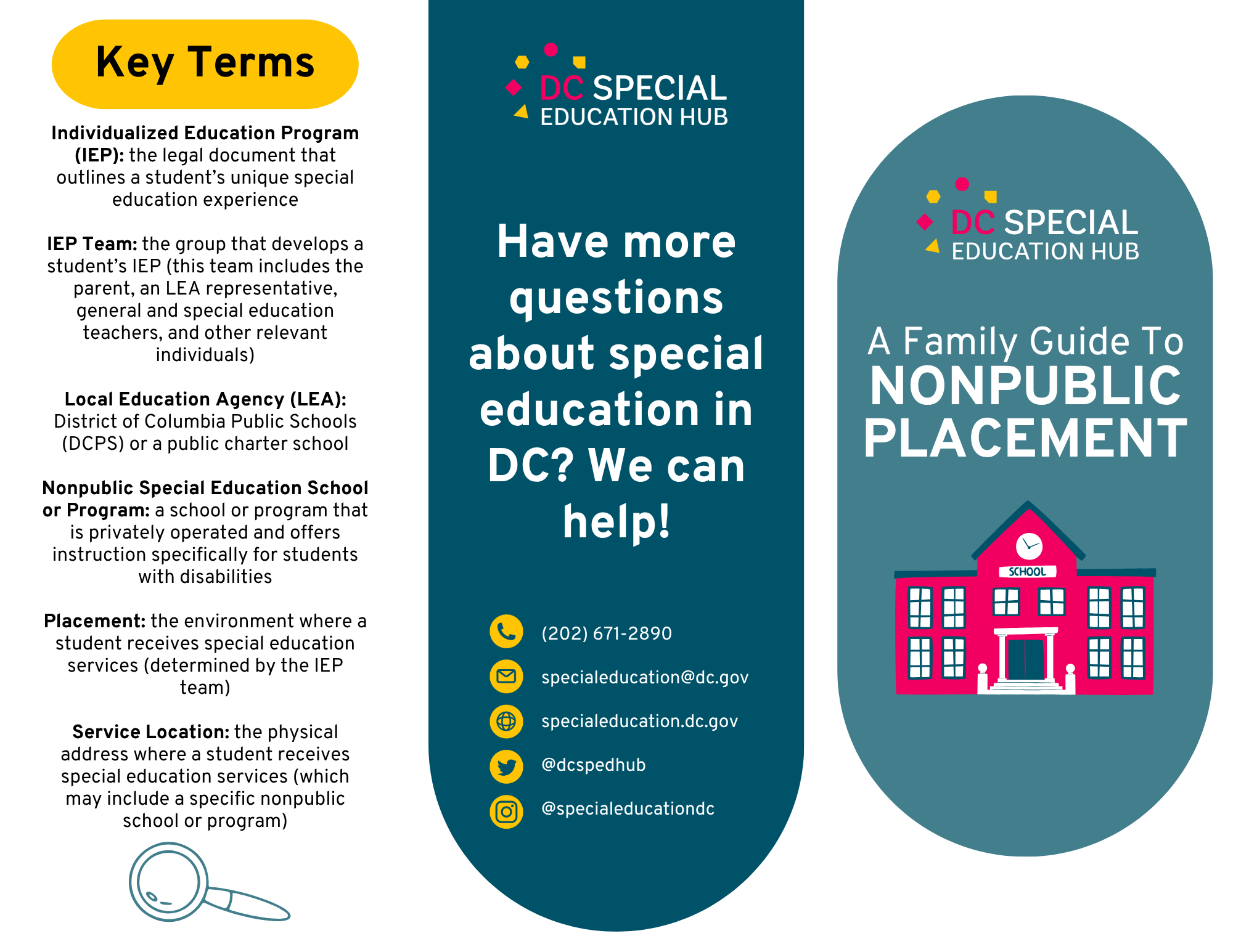 |
Available in the following languages:
|
How Long Will My Student Receive Special Education Services One Pager
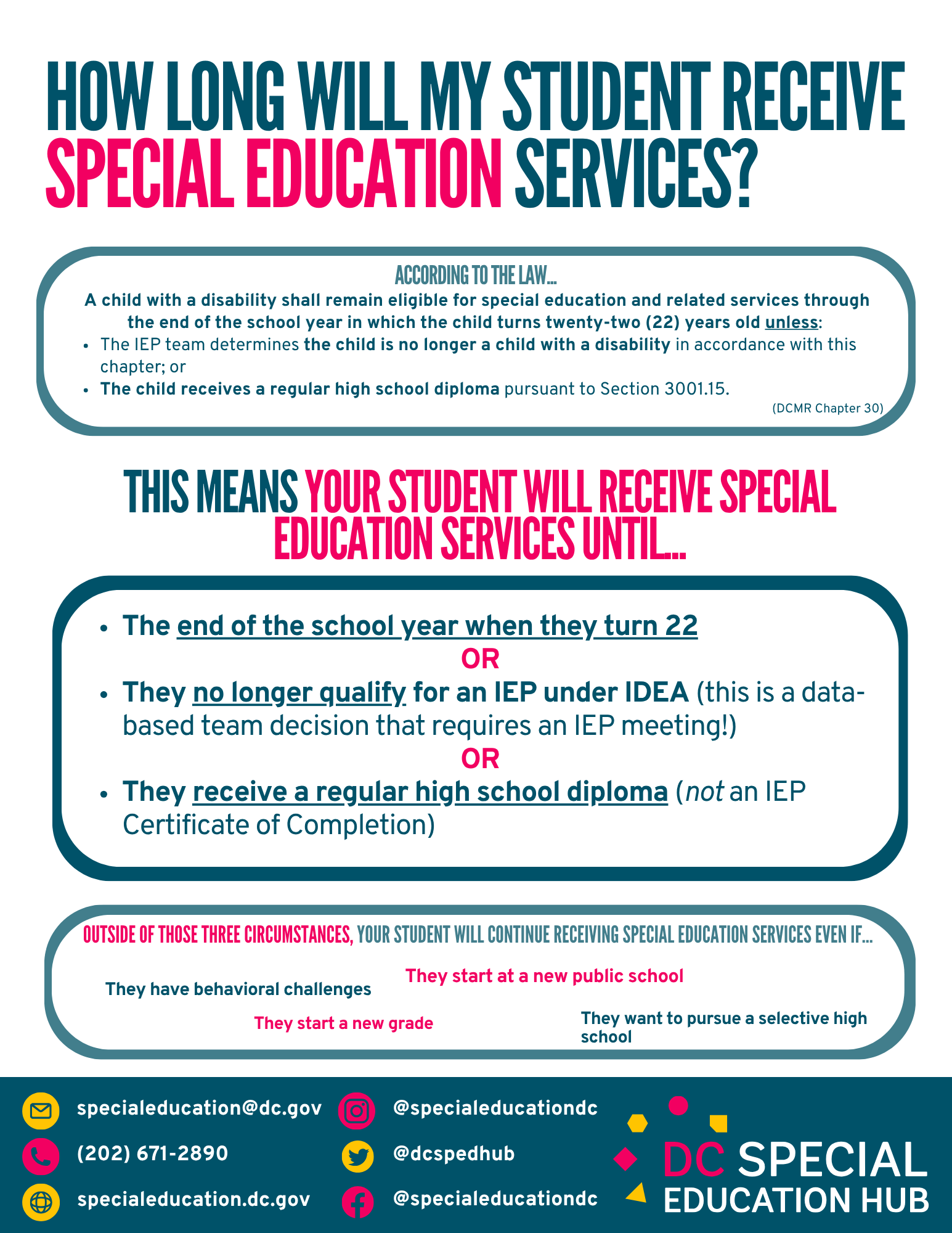 |
How long will your student be a special education student? Our resource explains how long a student is eligible to receive special education services in the District. Available in the Following Languages: |
Back to School Checklist
 |
Available in the following languages:
|
What is SEPR? One Pager
 |
Have questions about SEPR? This one-pager provides a brief overview of the Special Education Performance Report (SEPR), including what it is, how the District uses it to monitor progress, and how schools are using the data to support students with disabilities more effectively. Also Available in the Following Languages: |
Free and Appropriate Public Education (FAPE)
Students who qualify for special education under the Individuals with Disabilities Education Act (IDEA) have the right to a Free and Appropriate Public Education (FAPE).
According to the law, FAPE includes:
- Appropriate evaluations
- An Individualized Education Program (IEP)
- Effectively involving parents and students in decision-making
- Providing the Least Restrictive Environment (LRE) for learning
- Facilitating procedural due process to resolve dispute
Least Restrictive Environment (LRE)
Special education students should always receive services in their Least Restrictive Environment (LRE). This means special education students should be educated alongside their general education peers whenever possible. If a student’s disability requires instruction outside of the general education curriculum, they should be removed from the general education classroom for the least amount of time possible. In short, a student can be removed from the general education setting only if they cannot be “satisfactorily educated” with specialized instruction in their general education class. LRE provides benefits, including access to grade-level content and social interactions with a wider array of peers.
For example, a student with minimal needs in reading but significant needs in math may receive services in their general education reading class and only be pulled out of the general education math class for specialized small group instruction. This provides LRE because the student is only being removed from general education when their needs cannot be met inside their regular class.
The Continuum of Services
In order to provide FAPE, all public schools are required to provide a full continuum of special education services. This continuum includes a full scope of services, from least restrictive (instruction within the general education classroom) to most restrictive (home and hospital instruction). Schools may provide these services within their own programming. If they cannot provide the necessary services within their own programming, they are required to support the student through placement in outside programs. For example, if a student requires services in a specialized school, their public school district or public charter school are required to find placement in an appropriate school (and pay any related costs).
The basic settings along the continuum are the following:
- Inside of General Education: Students receive specialized instruction (accommodations, modifications, co-teaching, etc.) within the general education classroom
- Resource Room: Students receive specialized instruction outside of the general education classroom for part of the day (for example, attending a small group math class)
- Self-Contained Classroom: Students receive specialized instruction outside of the general education classroom for the entire day (for example, a special class for students with intellectual disabilities)
- Separate School: Students receive specialized instruction by attending a school specifically for students with disabilities. This may entail placement at a specialized public, public charter, or private school at no cost to the family.
- Home and Hospital Instruction: Students receive specialized instruction outside of the school setting at home or in the hospital
A student may move back and forth along the continuum of services throughout their educational career. For example, a student who initially requires intensive math supports outside of the general education curriculum may be moved back into the general education setting once significant growth is made. Alternatively, a student who initially received services in the general education setting may move up the continuum to a self-contained class if they demonstrate increased needs as they get older.
